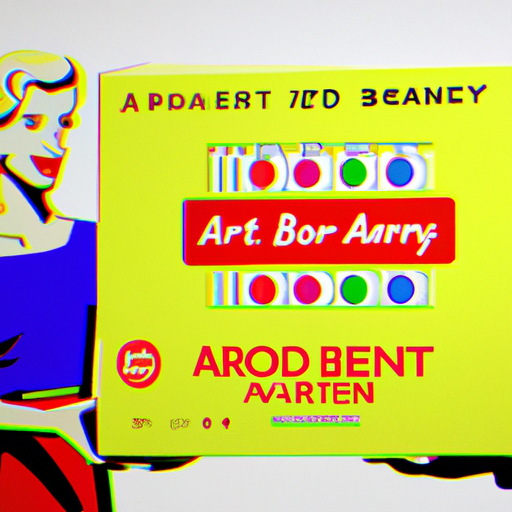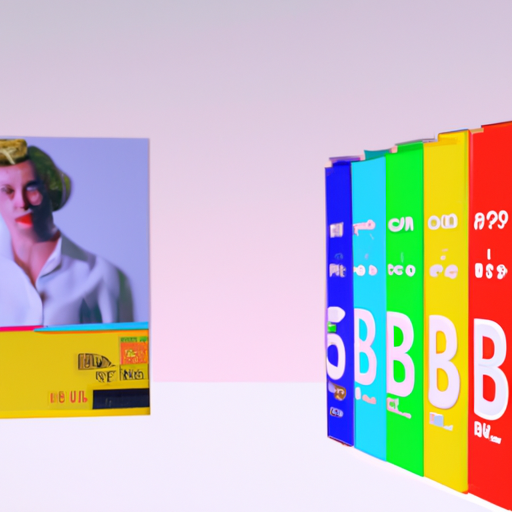
-
Table of Contents
- Package Design for B2B Products: Professional Appeal
- The Role of Package Design in B2B Marketing
- Key Elements of Professional Package Design
- 1. Simplicity and Clarity
- 2. Consistency with Branding
- 3. High-Quality Materials
- 4. Functional Design
- Case Study: Apple’s Packaging for the MacBook Pro
- Simplicity and Clarity:
- Consistency with Branding:
- High-Quality Materials:
- Functional Design:
- Conclusion
Package Design for B2B Products: Professional Appeal

When it comes to package design, many people tend to think of consumer products that are sold directly to individuals. However, package design is equally important for business-to-business (B2B) products. In fact, the packaging of B2B products plays a crucial role in attracting and retaining customers, conveying professionalism, and enhancing the overall brand image. In this article, we will explore the importance of package design for B2B products and provide valuable insights on how to create a professional appeal that resonates with B2B buyers.
The Role of Package Design in B2B Marketing
Package design is not just about aesthetics; it serves a multitude of purposes in B2B marketing. Here are some key roles that package design plays:
- First Impression: The packaging is often the first point of contact between a B2B product and its potential buyer. A well-designed package can create a positive first impression and pique the interest of the buyer.
- Brand Identity: The package design should align with the overall brand identity of the company. Consistency in design elements, such as colors, fonts, and logos, helps reinforce brand recognition and recall.
- Product Differentiation: In a competitive B2B market, package design can be a powerful tool for product differentiation. Unique and eye-catching packaging can set a product apart from its competitors and make it more memorable.
- Information Communication: B2B products often require detailed technical information. The package design should effectively communicate this information to the buyer, making it easy for them to understand the product’s features and benefits.
- Perceived Value: The quality and design of the packaging can influence the perceived value of the product. A well-designed package can create a perception of higher quality and justify a higher price point.
Key Elements of Professional Package Design
Creating a professional appeal in package design requires careful consideration of various elements. Let’s explore some key elements that contribute to a professional package design:
1. Simplicity and Clarity
A professional package design should be simple and clear, avoiding clutter and unnecessary complexity. The design should communicate the product’s purpose and key features at a glance. Too much information or visual noise can confuse the buyer and dilute the overall impact of the design.
Example: Apple’s packaging for its B2B products, such as MacBooks and iPads, is known for its minimalist design. The clean and simple packaging reflects the company’s commitment to sleek and elegant products.
2. Consistency with Branding
Consistency with the overall brand identity is crucial for a professional package design. The packaging should incorporate the company’s logo, colors, and fonts to create a cohesive brand experience. This consistency helps build brand recognition and reinforces the buyer’s trust in the product.
Example: IBM, a leading B2B technology company, maintains consistency in its package design by using its iconic blue color and logo on all its products. This consistency helps establish a strong brand presence and reinforces the company’s reputation for reliability and professionalism.
3. High-Quality Materials
The choice of materials for packaging can significantly impact the perceived quality of a B2B product. Using high-quality materials conveys a sense of professionalism and attention to detail. It also enhances the overall unboxing experience, leaving a positive impression on the buyer.
Example: Luxury automotive brands like Mercedes-Benz and BMW pay great attention to the packaging of their B2B products, such as spare parts and accessories. The use of premium materials, such as sturdy boxes and soft-touch finishes, reflects the brand’s commitment to luxury and craftsmanship.
4. Functional Design
A professional package design should not only look good but also serve its functional purpose effectively. The packaging should be designed to protect the product during transportation and storage. It should also be easy to open and reseal, ensuring convenience for the buyer.
Example: Dell, a leading B2B technology company, focuses on functional design in its packaging. The company uses custom-designed boxes that provide maximum protection for its products while also being easy to open and recycle.
Case Study: Apple’s Packaging for the MacBook Pro
Apple’s packaging for the MacBook Pro is a prime example of professional package design for B2B products. Let’s take a closer look at how Apple’s packaging aligns with the key elements discussed above:
Simplicity and Clarity:
The packaging for the MacBook Pro is clean and minimalistic, with a simple white box featuring a high-resolution image of the product. The design immediately communicates the sleekness and elegance of the laptop.
Consistency with Branding:
The packaging incorporates Apple’s iconic logo and uses the company’s signature font and colors. This consistency reinforces the brand identity and creates a sense of trust and familiarity.
High-Quality Materials:
The MacBook Pro comes in a sturdy and well-crafted box, which adds to the premium feel of the product. The materials used are of high quality, reflecting Apple’s commitment to excellence.
Functional Design:
The packaging is designed to protect the MacBook Pro during transportation, with custom-fit compartments and shock-absorbing materials. It is also easy to open and reseal, ensuring a hassle-free unboxing experience.
Apple’s packaging for the MacBook Pro exemplifies how a professional package design can enhance the overall brand image and create a positive buying experience for B2B customers.
Conclusion
Package design plays a crucial role in the marketing of B2B products. A professional package design can attract and retain customers, convey professionalism, and enhance the overall brand image. By focusing on simplicity and clarity, consistency with branding, high-quality materials, and functional design, B2B companies can create packaging that resonates with their target audience.
Remember, the packaging is not just a container for the product; it is an opportunity to make a lasting impression. Investing in professional package design can yield significant returns by differentiating your product from competitors and creating a positive perception of your brand.
